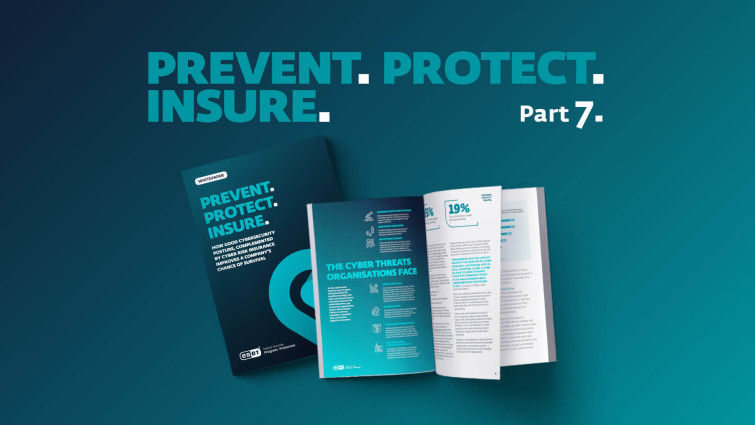Business Security
Have you ever thought about managing human risk in cybersecurity with a cyber-rating system, similar to how credit scores assess financial responsibility?
08 Oct 2024
•
,
5 min. read

Let’s talk about the inseparable relationship between cyber insurance and cybersecurity. They go hand in hand, whether they acknowledge it or not. But what about bringing businesses into the mix? With everyone involved, what does the future hold?
There are clear areas where this relationship can evolve. Insurers want to see cybersecurity not just as a box checked, but as a consistently effective practice. They might even want to witness this effectiveness in action, possibly in real-time.
For instance, if an insurer mandates endpoint detection and response (EDR), they expect more than just installation—they want assurance that the system is active and alerts are promptly addressed. Some insurers are already moving towards providing managed services or requesting regular EDR reports to ensure this level of oversight. However, relying solely on one security product for all insured entities could create a risky monoculture environment.
Looking ahead, how can insurers further mitigate risks to avoid claim payouts and sustain profitability?
Humans are a significant cybersecurity risk. They can fall victim to social engineering, make errors, cut corners, and changing their behavior is a challenge. So, how can insurers tackle the human factor to safeguard their bottom line?
Consider the finance industry, which uses credit ratings to assess the financial risk of individuals. Each person receives a dynamic score that adapts to their behavior, enabling financial institutions to adjust their risk exposure in real-time. Could a similar approach—a “cyber-rating”—be the answer to managing human risk in cybersecurity?
Could cyber-ratings be the future?
Imagine if cyber insurers could create risk profiles for employees within an organization to predict potential cybersecurity lapses. Could a “cyber-rating” system, akin to credit ratings, help identify individuals likely to make poor cybersecurity choices?
In some regions, employers already consider credit ratings for roles involving financial responsibility. Could cyber-ratings become a standard evaluation criterion?
With enough data on individuals’ online behavior and interactions, a predictive cyber-rating could anticipate actions like falling for phishing scams or mishandling sensitive data. Just as we monitor credit scores today, individuals could track their cyber rating and seek guidance to enhance it.
Employers might use cyber-ratings to hire cyber-responsible candidates, insurers could set score thresholds for clients, and individuals with lower ratings might face limitations. However, monitoring online behavior for risk assessment raises privacy and legal concerns, similar to credit checks during hiring processes.
A cyber-rating could also complement credit ratings, strengthening overall risk assessment. By identifying individuals prone to online fraud, financial institutions could implement additional security measures for those customers.
Yet, robust security measures must safeguard cyber-ratings to prevent misuse by malicious actors. If these scores fall into the wrong hands, cybercriminals could exploit them to target vulnerable individuals, undermining the system’s original intent of enhancing cybersecurity and risk management.
As cyber insurance continues to evolve, addressing human risk could be the next breakthrough beyond current cybersecurity standards imposed by insurers. How do you think businesses should adapt to the rising cyber risk in today’s digital landscape?
Discover how a combination of cyber risk insurance and advanced cybersecurity solutions can increase your resilience against cyberattacks. Download our free whitepaper “Prevent. Protect. Insure” here.




